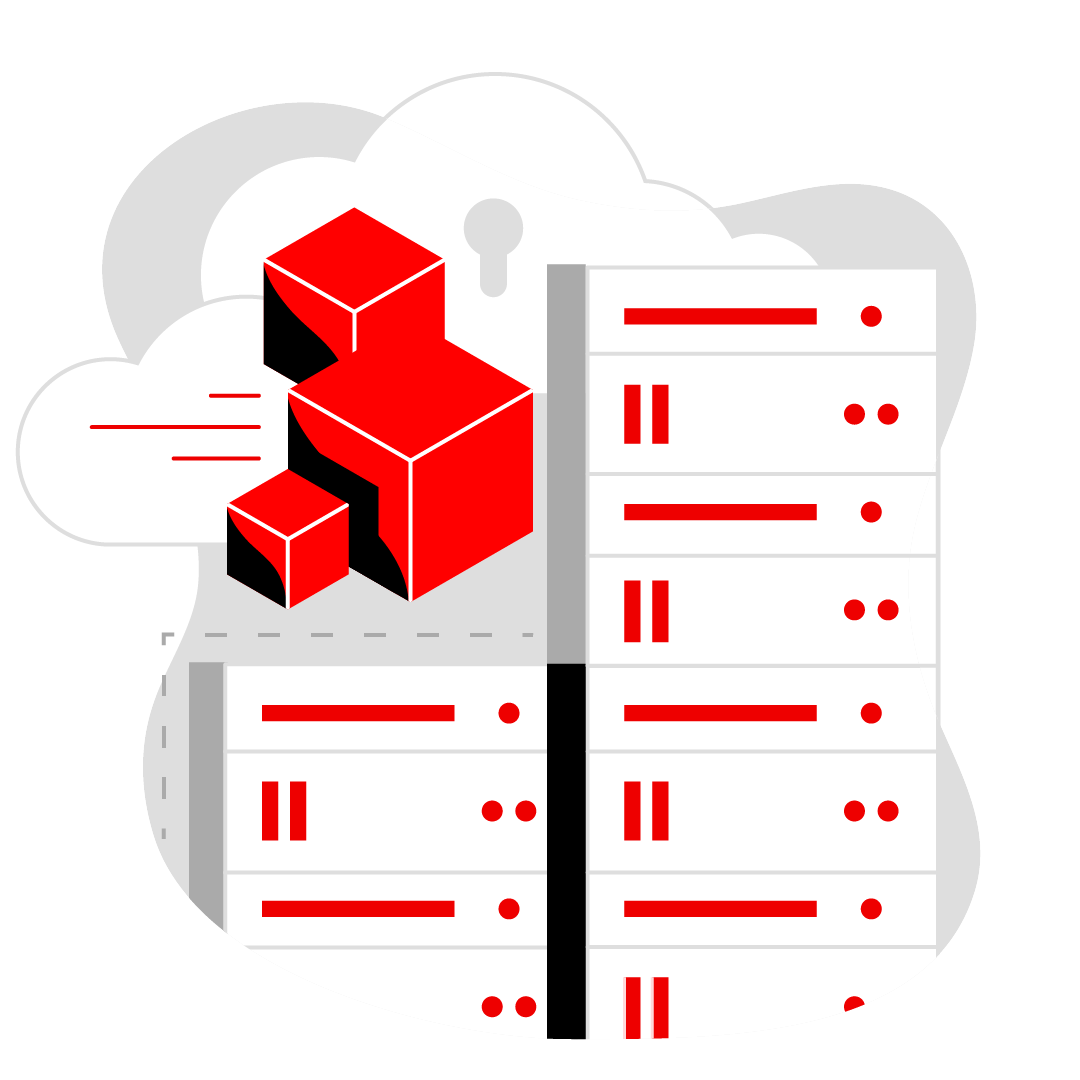Overview
Containers make a world of difference when it comes to application development and deployment, greatly reducing complexity and making application portability possible across multiple cloud environments, giving developers one less barrier to their focus on creating better applications with better user experience.
Keeping up in the modern business environment (not to mention innovating ahead of the curve) means building new applications and restructuring traditional apps to become cloud-native—all while meeting the current stream of demand. It’s an environment that requires agility and the strategic use of containers, Kubernetes, and cloud technology.
Kubernetes—a container orchestration platform based on open source—automates many of the manual processes involved in deploying, managing, and scaling containerized applications. Using Kubernetes and Linux® containers, you can cluster together groups of hosts running these containers and more easily and efficiently manage them, spanning on-premise, public, private, or hybrid clouds. This makes them ideal for hosting cloud-native applications—especially those requiring rapid scaling.
A virtual legacy
Virtualization changed everything 20 years ago, and still serves traditional monolithic apps well today. But virtualization doesn’t offer much when it comes to today’s organizations running open source microservices applications as most of the same functionality is native to Linux. The trend toward containers and cloud-native capability is encouraging organizations to move away from bloated virtualized architecture—and the bloated pricing associated with it.
Unlike virtual machines (VMs), containers use the Linux kernel to manage compute resources, meaning each app gets its own container, preventing dependency conflicts and working across multiple environments. Kubernetes orchestrates these independent containers—scheduling, load balancing, and managing resources—allowing them to run as isolated processes with their own resources (but don’t worry—Red Hat® OpenShift® Virtualization lets developers bring VMs to containerized workflows).
As many teams are turning to a cloud-based future, many are adopting and embracing automation and containers as ways to expand their skills and capabilities. Kubernetes, and its valuable features for managing and orchestrating containers in production, development, and test environments, has emerged as an industry standard and therefore, critical for organizations to understand.
Red Hat’s leadership in Kubernetes
Red Hat was one of the first companies to work with Kubernetes’ creator—Google—on the project even prior to launch. Since then, it has become the 2nd leading contributor to the Kubernetes upstream project and became one of the first to market with an enterprise Kubernetes platform.
With Red Hat OpenShift, Red Hat became a leader in open source container technology, including Kubernetes on a Red Hat Enterprise Linux foundation, creating essential tools for securing, simplifying, and managing your container infrastructure.
Red Hat OpenShift is Kubernetes for the enterprise, including all the extra pieces of technology that make Kubernetes more powerful and viable. These components include networking, authentication, monitoring, security, and automation, among others.
Unlike other vendor platforms that require proprietary components—as well as complex processes—Red Hat OpenShift is a single, integrated platform for operations and development teams, validating popular storage and networking plug-ins for Kubernetes and including built-in monitoring, logging, and analytics solutions.
Flexibility and mobility mean more capability
Kubernetes-based workloads need to be mobile and flexible in order to best fit the (ever-changing) needs of a new and/or growing business. Red Hat OpenShift—interoperable with all Red Hat products and many solutions from other vendors, like Docker, Microsoft, and AWS, to name a few—makes it easier to scale and adapt to innovation as you need to, as well as avoiding vendor lock-in.
If you want to use Kubernetes today, you need a platform that is ready today. You need speed, stability, security, and scale. And you need it to run on multiple clouds.
Containers are Linux
Linux containers are a solid foundation for Kubernetes because they help reduce conflict between your development and operations teams by dividing responsibilities. While developers focus on their apps, operations teams can keep their attention on the infrastructure and its elements. And because Linux containers are based on open source technology, you get the latest updates and advancements as soon as they’re available.
Red Hat OpenShift automates the container application life cycle, integrating security into the container pipeline and bringing hundreds of security, defect, and performance fixes with each release.
Some commercial distributions of Kubernetes can include open source components, but then lock you into a proprietary platform. A truly open source distribution will always maintain open components, from the operating system all the way to the serverless dashboard.
Migrate to Red Hat OpenShift with ease
With the dominance of Kubernetes, and the thriving ecosystem around the platform, organizations are moving their workloads from to Kubernetes at a rapid pace. With Red Hat OpenShift, Red Hat provides a hybrid cloud enterprise Kubernetes platform for building and running new cloud native applications, as well as modernizing existing ones.
Building on a foundation of OpenShift, you can use Red Hat Advanced Cluster Management and Red Hat Ansible® Automation Platform together to efficiently deploy and manage multiple Kubernetes clusters across regions, including public cloud, on-premise, and edge environments.


